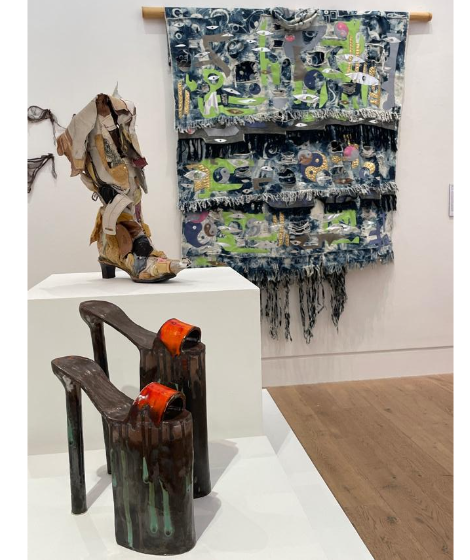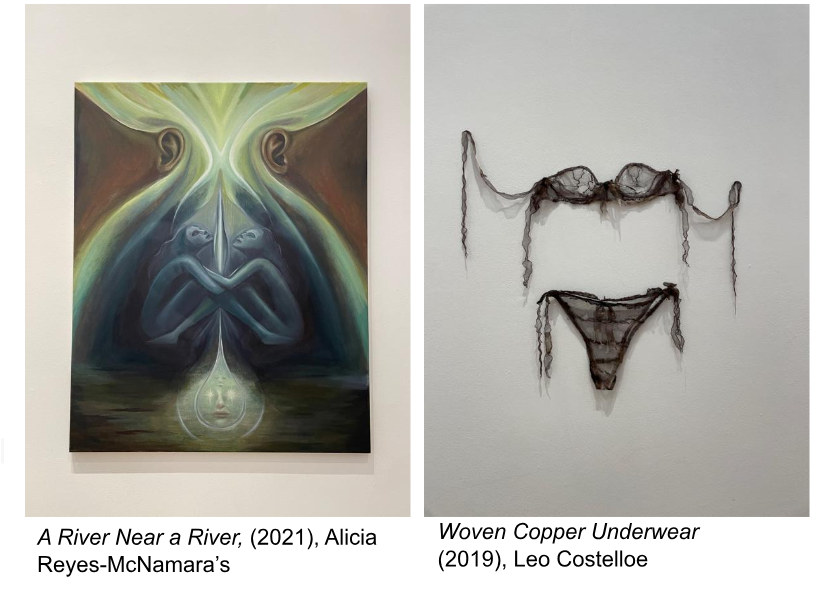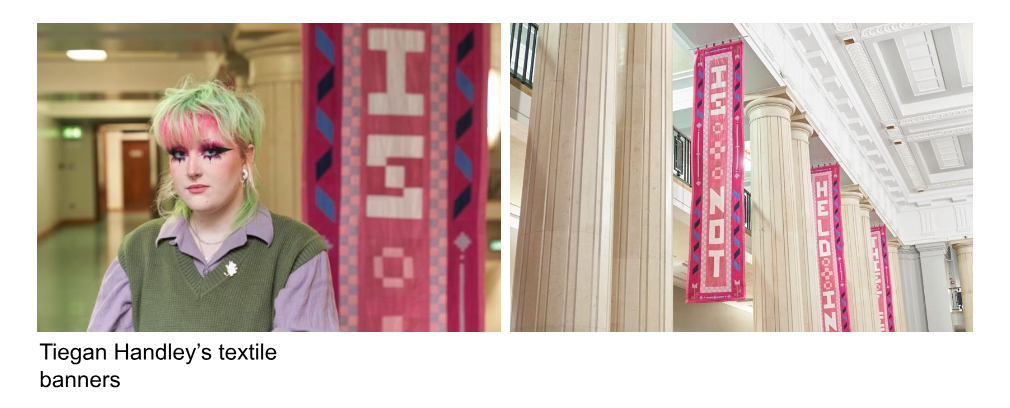
Review: Contested Bodies – Challenging Gender Constructs
Words by Keira Beatty / Edited by Mia Stapleton
Contested Bodies opened in The Stanley and Audrey Burton Gallery on the 25th of October. It is described in the exhibition catalogue as “a group exhibition that interrogates and celebrates the performativity of gender as a social construct”. Leeds is the perfect host for such an exhibition due to the city’s history of supporting feminist and LGBTQI+ issues along with the University’s progressive, internationally recognised teaching and research.

The exhibition runs until the 6th of April 2024 and includes works by 40 artists of different genders. It aims to celebrate the LGBTQI+ community and make a statement about LGBTQI+ rights and the current political and complex social climate surrounding gender. Works within the exhibition address these themes by using the ‘body’ or the concept of the ‘body’ as their subject matter or medium. Each artist has depicted different bodies in order to explore “gender stereotypes, self-representation or shapeshifting through fashion” as well as “notions of race, class, objectification, pleasure or desire” (Foreword, Contested Bodies Exhibition Catalogue). The works are emotive, inventive, and topical, raising questions about the social construct of gender.
British textile artist and University of Leeds Alumnus, Tiegan Handley’s four large textile banners hang in the Parkinson Court outside the gallery and set the tone for the exhibition. They state “My self is not held in this flesh”, which highlights that flesh should not be a limit in terms of gender and sexuality. The use of pink, blue, and purple further links the artwork to trans and queer pride, making the banners flags of protest and freedom for the LGBTQI+ community.

The entry corridor to the exhibition is lined with four works, three of which are large-scale, bold, and visually arresting. Gutierrez’s Body en Thrall, a photographic image of a woman with two halves of a cantaloupe in her bra, embodies the themes of the exhibition, mainly due to Gutierrez’s use of the emphasised female gaze. The figure stares out at the viewer, contradicting traditional depictions of women represented under the male gaze. These are normally passive and invite the male spectator-viewer to gaze upon them and, in some cases, suggest the viewer’s ownership of their bodies. In contrast, Gutierrez’s figure addresses and assaults the gaze of the viewer ergo taking ownership of her body.
The exhibit engulfs the viewer in a variety of mediums, styles, and representations. Woven Copper Underwear (2019), by Leo Costelloe, is a set of women’s underwear created out of copper wire and tin string, to demonstrate the contrast between traditional hyper feminine imagery and traditional masculine materials. Zadie Xa’s Ice Caps + Frozen Jewels/ Roughcut Diamonds and Faux Mink Space Suits (2016) is a textile sculpture that can be worn as a cape. It emphasises the idea of shape-shifting– how fashion can change who you are and how you represent yourself– which links to the idea of gender as a fluid concept and ergo a societal construct. In Pablo (2017), Jakob Lena Knebl has turned her own nude body into a canvas, thereby demonstrating the fluidity of the body and how it can be transformed.

Several of the pieces within the exhibition relate to mythology and folklore. In both Alicia Reyes-McNamara’s Mexican and Irish heritages, women and feminine goddesses are often punished, condemned, or portrayed as fallen women. In A River Near a River (2021), she depicts two strong, empowered female goddesses who sit in the centre of the work, thereby transforming these myths in order to create a positive, strong female image.
In tandem with Contested Bodies, the Gallery has displayed certain works in its permanent collection with lavender labels, which links the works already in their possession with feminist and LGBTQI+ narratives. This need to challenge the traditional narratives of artistic imagery has been sparked not only by the themes of the exhibition, but by ongoing discussions occurring in the field of Museum Curation and Art Historical research. Shot Bird (1978) by Marie Walker Last is now displayed with one of these lavender labels and is now said to “mirror the female persecution, oppression, and lack of control over one’s body at the hands of another ” which was not previously an interpretation that was considered.
I would definitely encourage a visit to Contested Bodies, as it is an eye-opening experience into the world of gender politics and the current socio-political climate surrounding the LGBTQI+ community. It is topical and informative, but also a display of extreme and diverse creativity due to the inventive use of a wide variety of mediums.
(Image Credits: Keira Beatty / The Stanley and Audrey Burton Gallery)

